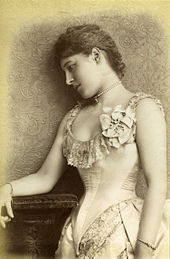
Figure 1 – Lillie Langtry, 1885 by William Downey. From the Wikipedia and in the public domain because of its age.
On Sunday I was thinking about the role of photography in fiction. Well, yes I was resisting the notion that there were better ways to spend my time, and it is true that “an idle mind is the Devil’s workshop.” Ah well! I was not so much thinking about Jimmy Olsen in Superman comics or even Jimmy Stewart’s role in the movie “Rear Window.” I was more interested in how photography came into play in, say, the first fifty years or so of photography, which would take us to about 1888. Then I started wondering about whether photography played a role in any of the Sherlock Holmes stories.
This took me to “A Scandal in Bohemia.” (1891). Briefly the plot is that Watson is visiting Holmes when a visitor arrives, who introduces himself as Count Von Kramm, an agent for a wealthy client. It being elementary, Holmes quickly deduces that he is in fact none other than Wilhelm Gottsreich Sigismond von Ormstein, Grand Duke of Cassel-Felstein and the hereditary King of Bohemia.
The King is to become engaged to Clotilde Lothman von Saxe-Meiningen, a young Scandinavian princess. However, the plot thickens. It seems that five years earlier he had an affair with American opera singer, Irene Adler. The king is afraid that if his fiancée’s highly-principled family learns of his impropriety, they will call off the marriage. It also appears that there are letters and, dum dee dum dum, a photograph of him with Miss Adler. , He has sought desperately to regain the letters and photograph. He has offered to pay for them, and Irene Adler has threatened to send them to his fiance’s parents.
The photograph is described to Holmes as a cabinet (5½ by 4 inches) too bulky for a lady to carry upon her person. The plot goes forth from there in typically Holmesian fashion. In the end Holmes manages to steal the photograph, but to his chagrin finds out that Irene Adler has replaced it with a picture of herself alone along with a note saying that while she will keep the original for her own protection, she will keep the king’s secret. From then on Homes always refers to Irene Adler as “that woman.” She is the only woman who ever bested him at his own game. As Watson recounts in the beginning of A Scandal in Bohemia:
“To Sherlock Holmes she is always the woman. I have seldom heard him mention her under any other name. In his eyes she eclipses and predominates the whole of her sex. It was not that he felt any emotion akin to love for Irene Adler. All emotions, and that one particularly, were abhorrent to his cold, precise but admirably balanced mind. He was, I take it, the most perfect reasoning and observing machine that the world has seen, but as a lover he would have placed himself in a false position. He never spoke of the softer passions, save with a gibe and a sneer. They were admirable things for the observer — excellent for drawing the veil from men’s motives and actions. But for the trained reasoner to admit such intrusions into his own delicate and finely adjusted temperament was to introduce a distracting factor which might throw a doubt upon all his mental results. Grit in a sensitive instrument, or a crack in one of his own high-power lenses, would not be more disturbing than a strong emotion in a nature such as his. And yet there was but one woman to him, and that woman was the late Irene Adler, of dubious and questionable memory.”
Being fictional, there are, of course, no actual mages of Adler – well perhaps that is not quite the case. There remains the question of who is the fictional source for the character. This seems most likely to be the great American singer Lillie Langtry. Langtry was the lover of Edward, the Prince of Wales. She was referred to as Jersey Lily because like Adler she was born in New Jersey. After Edward Langtry was believed to have had affairs with other noatbles and as a result she was much speculated about in the press. As a celebrity and great beauty, there are many photographs of Lily Langtry. The image of Figure 1 is by London photographer William Downey and was taken in 1885.
